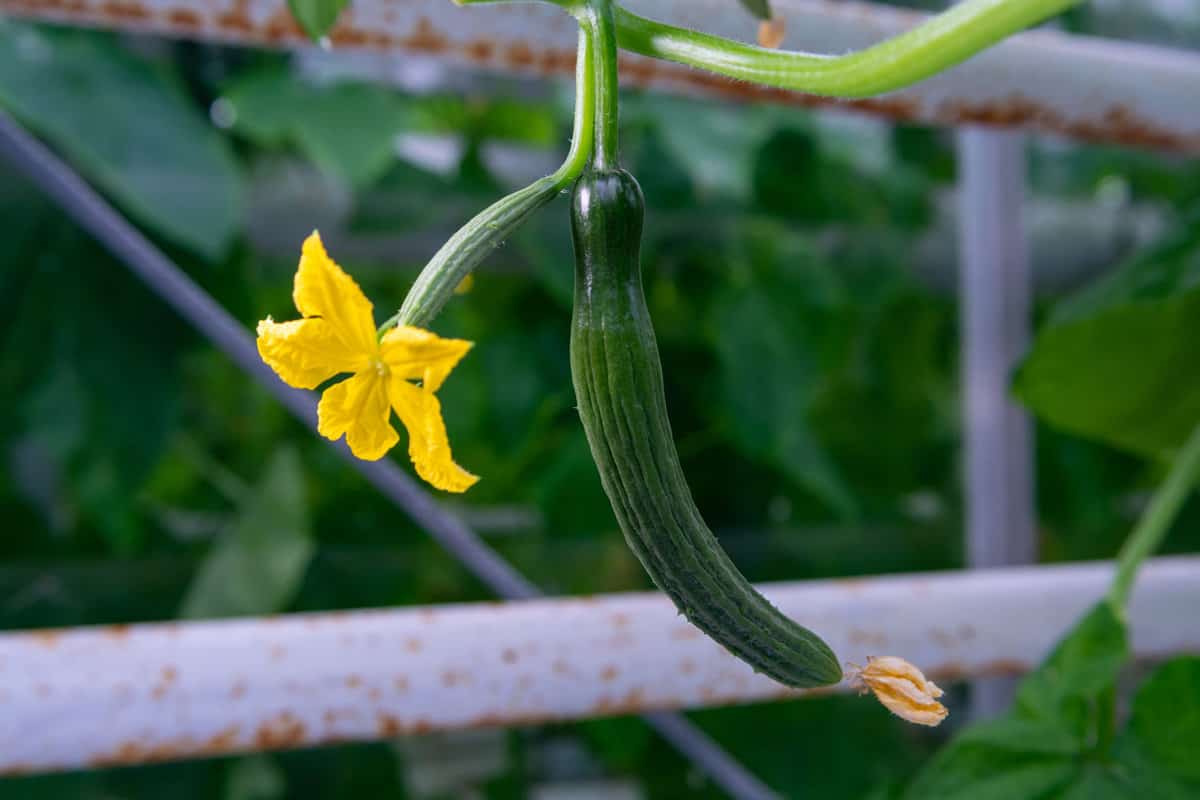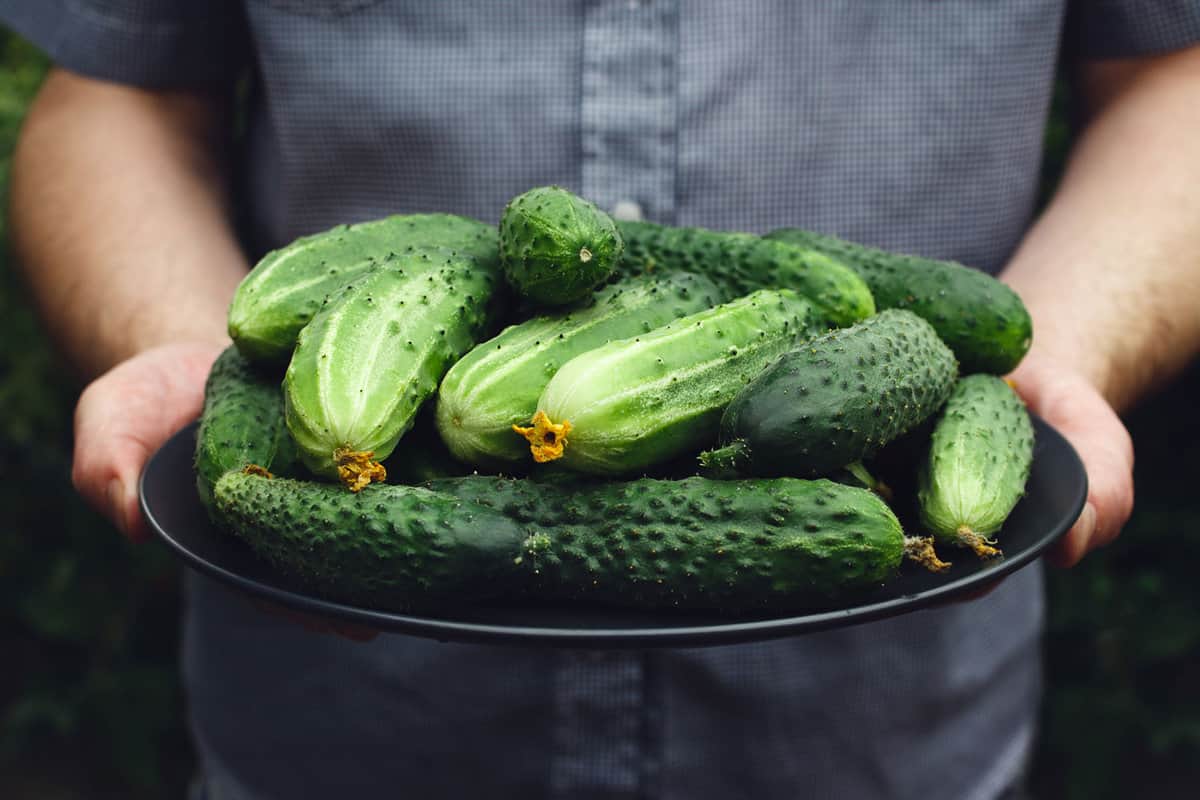In most regions, the cucumber season traditionally extends from May to August, although this varies based on location.
All plants have a lifespan and show signs of decline, such as smaller, poorer-quality fruits.
Know the top recommendations for managing cucumber plants at the end of the season to maintain a healthy and productive garden.
Implementing these recommendations will not only facilitate your garden's continued growth but also promote sustainable and responsible gardening practices.
The Life Span Of Cucumber Plants

Cucumber plants have a simple life cycle, which usually takes around 50 to 70 days to complete, depending on the variety and growing conditions.
As the cucumber plants reach the end of their life span, they will naturally start to decline.
The leaves may turn yellow, and fruit production will decrease. When you notice these signs, it's time to wrap up the season and follow various suggestions to make the most of your cucumber plants.
Once the cucumber plants have reached the end of their lifecycle and are no longer producing fruits, it's time to remove the plants from your garden.
Taking out the spent plants will help to prevent disease and pest issues, making your garden a healthier space for future crops.
You might also like to read: When Are Cucumbers In Season?
Do Cucumbers Regrow Each Year?

Cucumbers are annual plants that complete their life cycle in a single growing season.
They are typically planted in the spring and harvested in the summer. Once the growing season is over, the plant will begin to die, and it cannot be regrown the following year.
They are intolerant of frost, and even light freezing temperatures can cause them to wither and die.
Some gardeners may choose to save seeds from a mature cucumber by harvesting them after the usable stage, cleaning, drying, and storing them for future planting.
However, this method can be unreliable, especially if the seeds come from hybridized plants, as they may not produce the same type of fruit as the parent plant.
Top Recomendations

In this section, we'll provide some top recommendations for what to do with cucumber plants at the end of the growing season.
Harvesting Cucumbers At End Of Season
To start, always choose a sunny day for harvesting, as this ensures the cucumbers are at their crispiest and juiciest.
Cucumbers should be harvested when they're a good size and have a vibrant green color.
Picking them regularly encourages the plant to produce more cucumbers and prevents overgrown or yellowing fruit. Gardeners can check their specific cucumber variety for ideal size and maturity guidelines.
When collecting the cucumbers, it's best to place them carefully into a basket or container, avoiding bruising or damage.
This helps keep them fresh for as long as possible. After harvesting, cucumbers should be stored in a cool, dry place, away from direct sunlight.
By following these recommendations, gardeners can enjoy a healthy and delicious harvest of cucumbers at the end of the growing season.
Post-Harvest Care And Disposal Of Cucumber Plants
Once the final cucumbers have been harvested, approximately 70 days from planting, the leaves of the plant may begin to yellow and wilt.
At this stage, it's advisable to remove the plants from the garden promptly. If the plants show no signs of disease or insect damage, they can be added to your compost pile to contribute to future soil enrichment.
However, if the plants are impaired by disease or insects, it is wise to dispose of them properly and not include them in the compost.
This careful handling helps to prevent the potential spread of disease or pest infestations in your garden.
Composting Cucumber Plants
Composting cucumber plants at the end of the season offers various benefits. It helps recycle nutrients back into the soil, enriching it for future plantings.
Moreover, composting reduces waste and decreases the need for synthetic fertilizers. By composting, gardeners can also contribute to a healthier environment.
To compost cucumber plants:
1. Remove Debris And Diseased Plants
Begin by collecting all the cucumber plants and removing any debris, such as twigs, leaves, or weeds.
Make sure to discard any diseased plants to prevent contamination in the compost pile.
2. Chop Plants Into Smaller Pieces
Cut the cucumber plants into smaller segments to speed up the decomposition process. This will make it easier for microorganisms to break down the plant matter.
3. Create A Compost Pile
Start a compost pile by layering a mixture of green materials (such as cucumber plants) and brown materials (like dried leaves or straw).
4. Add Water And Turn The Pile
Keep the compost pile moist but not overly saturated. Turn the pile every few weeks to provide oxygen and facilitate aerobic decomposition.
In some time, several weeks or months the compost will turn into a dark, crumbly material resembling soil.
This nutrient-rich material can then be used to enrich garden beds and promote healthy plant growth.
Preparing for Next Season
As the growing season for cucumbers comes to an end, it's essential to begin preparing your garden for the next planting cycle. Here are the key steps to consider:
Replenishing Soil Nutrients
After the cucumber plants have finished producing fruit, it's time to prepare your garden for the next season.
Start by replenishing the soil nutrients to ensure a healthy environment for future plant growth.
Pull out your summer crops and discard any diseased plants, as they can carry diseases that persist in the soil.
Next, add organic materials like compost and aged manure to the garden bed. This will help improve soil texture and fertility.
Crop Rotation
Implementing a crop rotation plan is another crucial step in preparing your garden for the next season.
Rotating crops helps prevent soil-borne diseases and pests, and it promotes a diverse and healthy soil ecosystem.
After growing cucumbers, consider planting a different crop family in the same location.
Make a note of which crops were grown in each section of your garden, so you can keep track of your rotating schedule.
This will help you determine the best crops to plant in each area in the coming seasons, ensuring a healthy and productive garden year after year.
In Closing
Understanding the life span of cucumber plants and recognizing the signs of the end of the growing season is vital for maximizing harvests and maintaining a healthy garden.
By following the recommendations in this article, you can successfully harvest cucumbers, dispose of or compost spent plants responsibly, and replenish soil nutrients to prepare for future planting seasons.
Careful planning and timely actions at the end of the cucumber season can set the stage for continued success of a fruitful garden year after year.
